While the internet has dramatically expanded the ability to share knowledge, it has also made issues of privacy more complicated. Many people are justifiably worried about their personal information being stolen or viewed, including bank records, credit card info, and browser or login history.
If you’re looking for more privacy while browsing, Tor is a good way to do that, as it is software that allows users to browse the web anonymously. It should be noted that Tor can be used to access illegal content on the dark web, and Digital Trends does not condone or encourage this behavior.
Why does Tor exist?
In this climate of data gathering and privacy concerns, the Tor browser has become the subject of discussion and notoriety. Like many underground phenomena on the internet, it is poorly understood and shrouded in the sort of technological mysticism that people often ascribe to things like hacking or Bitcoin.
Initially developed by the U.S. Naval Research Lab in the 1990s, onion routers get their name from the onion-like layering technique that conceals information about user activity and location. Perhaps ironically, the organization received the bulk of its funding from branches of the United States government for years, which still views Tor as a tool for fostering democracy in authoritarian states.
To understand how Tor can protect a user’s identity as they browse the internet, we need to discuss the internet. At its most basic, it’s a series of connections between computers across great distances. Some PCs house the data stored on the internet, including webpages like Google, which are known as servers. A device used to access this information, such as a smartphone or PC, is known as a client. The transmission lines that connect clients to servers come in a variety of forms, whether fiber-optic cables or Wi-Fi, but they are all connections. With the invention of Wi-Fi, satellite internet, and portable hotspots, the internet is both more accessible and more vulnerable than ever before.
Data can be intercepted or spied on in a growing variety of ways, especially if networks are not using proper encryption or have accidentally downloaded malware. On the white hat side, individuals and organizations (including governments, law enforcement ISPs, and social media companies) can access internet data to monitor who is performing illegal activities — or to collect valuable data on user behaviors and actions that can be analyzed or sold.
A growing number of solutions address these privacy issues, such as VPNs or Virtual Private Networks. Tor is another browser-based solution that many use.
How Tor has the answer to secure browsing
There are two critical aspects of onion routing. First, the Tor network is composed of volunteers who use their computers as nodes. During normal browsing, information travels across the internet in packets. When a Tor user visits a website, however, their packets don’t directly move to that server. Instead, Tor creates a path through randomly assigned nodes that the packet will follow before reaching the server.

The other important aspect of onion routing is how the packets are constructed. Typically, packets include the sender’s address and the destination, like snail mail. When using Tor, packets are instead wrapped in successive layers like a nesting doll.
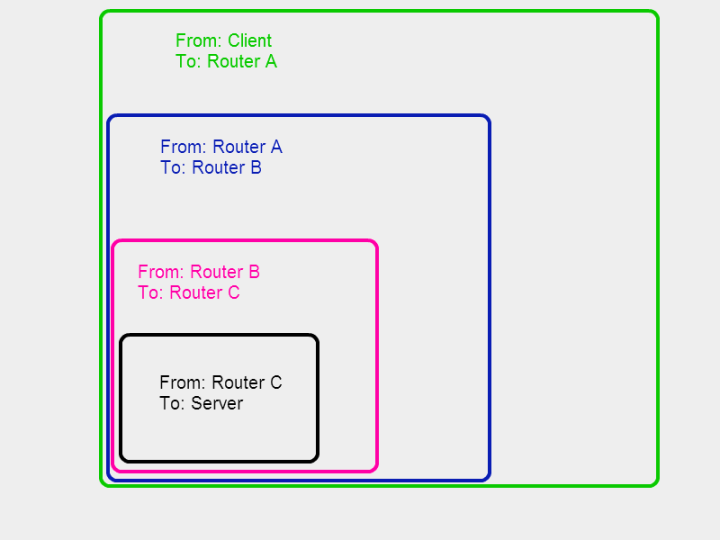
When the user sends the packet, the top layer tells it to go to Router A, the first stop on the circuit. When it is there, Router A takes off the first layer. The next layer instructs Router A to send the packet to Router B.
Router A doesn’t know the ultimate destination, only that the packet came from the user and went to B. Router B peels off the next layer, passing it down the line to Router C, and this process continues until the message reaches its destination.
At each stop, the node only knows the last place the packet was and the next place it will be. No node records the complete path of data, and neither would anyone observing the message go out, assuming your first three servers are configured correctly.
Who uses Tor, and why?
Anonymity is Tor’s bread and butter, and as such, it is probably impossible to get an accurate view of its user base. Specific trends become apparent, however, and some Tor advocates are especially vocal about their reasons for using the service.
Tor has become popular with journalists and activists in countries that impose restrictions on their citizen’s internet and expression. For whistleblowers, Tor provides a safe avenue to leak information to journalists.
You might not know, but when Edward Snowden released information on the NSA’s PRISM program to news organizations, he did so via Tor. One doesn’t need to be an activist, freedom fighter, or criminal to appreciate Tor, however. Many academics and ordinary citizens endorse Tor as a tool to keep privacy and freedom of expression alive in the digital age. Agencies like the CIA are also active on Tor to make it easier to receive tips and information.
Despite the Tor Project’s good intentions, Tor has developed a bad reputation in the mainstream press, and not without cause. When you have a free-to-use privacy browser that is easily distributed and offers users both support and community forums, it’s no surprise that some of those communities form around disreputable subjects. Tor fights back against this connotation with PrivChat webinars from some of its popular users in human rights and pushes for democracy, as well as guides for those operating under hostile governments to help them stay safe.
How to use Tor: how to get it
In keeping with the ideological aims of the Tor Project, Tor is free to use and available across most platforms, including Linux. Simply download and install the browser from the Tor Project website, which is a modified version of Firefox available for Windows, macOS, Linux, and Android.
Users should note that while Tor Browser is pre-configured to work correctly, users on networks with firewalls or other security systems may experience difficulties. Moreover, being careless when browsing can still compromise one’s anonymity. Tor’s website has a list of things to avoid doing while using the browser.
How to use Tor: a quick tour of the software
Once you’ve downloaded and installed Tor Browser, you’ll need to know how to navigate it. Follow these steps for a quick tour of Tor Browser:
Step 1: Open Tor Browser on your PC.
Step 2: On the Connect to Tor screen that appears, you can either go ahead and connect to Tor by selecting Connect or take the time to set up your connection by choosing the Configure connection option. For the purpose of this guide, we’re going to just choose Connect.
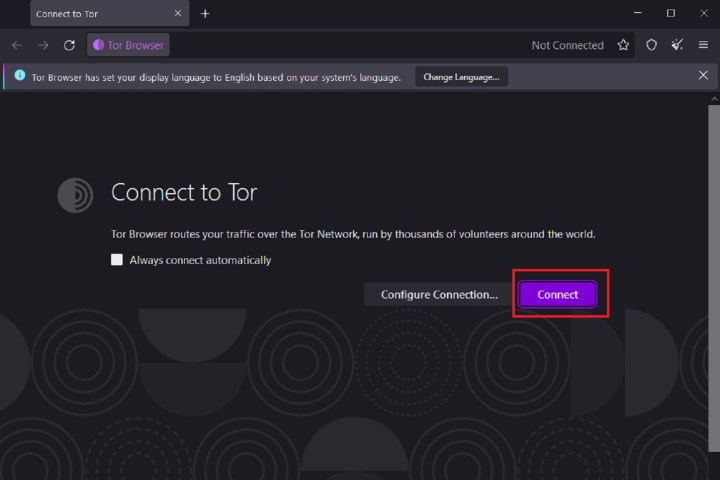
Step 3: It may take a few minutes to connect, but once you’re connected to Tor, you’ll be presented with a welcome screen that features a DuckDuckGo search engine search bar prominently. You can use this search bar or the one at the top of your Tor Browser window to perform a more private web search. To do so in the address bar at the top of your screen, just type in your search terms and press the Enter key on your keyboard or select the Right arrow icon in the address bar. You should then be presented with a DuckDuckGo search results page.
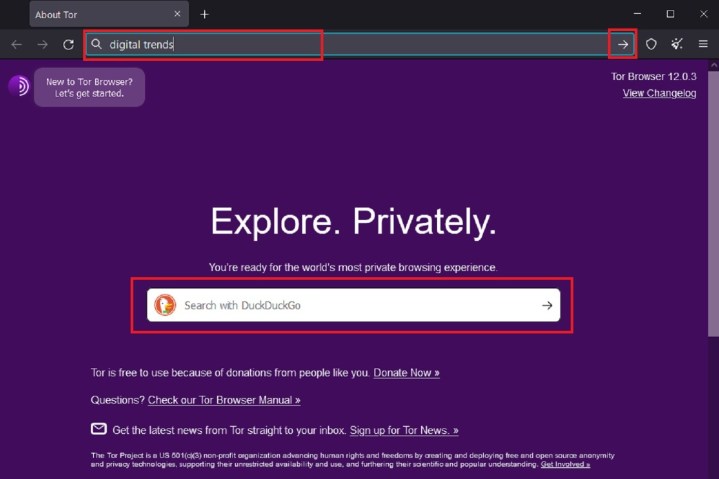
Step 4: If you’ve used Firefox before, Tor Browser will look familiar to you:
- You’ll still select the Star icon to bookmark a webpage.
- You’ll still use the address bar at the top of the window to conduct web searches, and type in web or onion addresses for certain websites. And you’ll select the Plus sign icon to open new tabs.
- The Three horizontal lines menu icon will still open a larger menu of features and settings for your browser, but it will also contain some new Tor-specific features such as New identity and New Tor circuit for this site. We’ll go over these and other new features in the following steps.
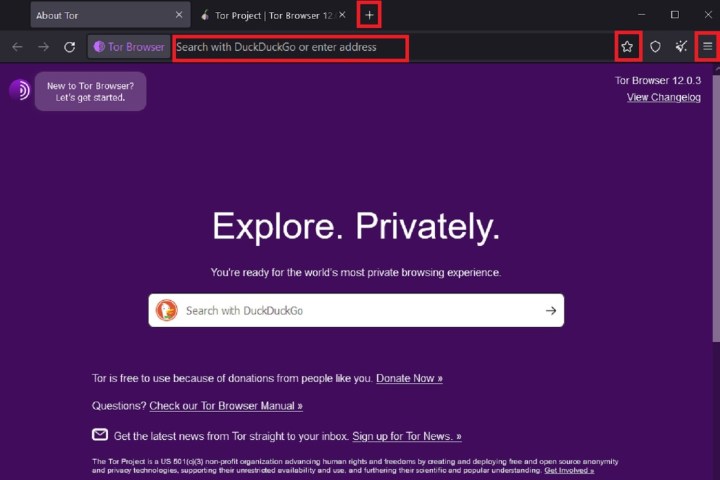
Step 5: Some websites are onion services, which means you can only access these sites via the Tor network. To get to these onion service websites, you’ll usually need to type in their onion address into the address bar at the top of the Tor Browser’s window. This address is usually 56 characters long and ends with a “.onion”. Some regular websites also offer an onion service version of their site. If they do, Tor will usually show a purple “.onion available” icon in the address bar. You can select this to open the onion service version of a website.
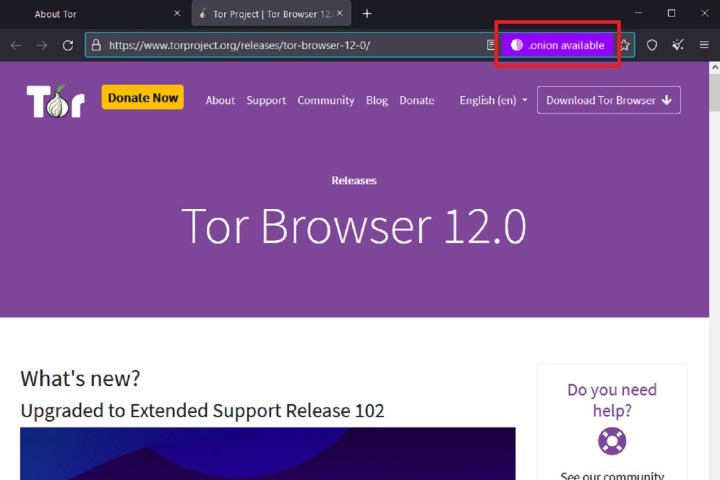
Step 6: There are two icons in the top right corner of the Tor Browser, located between the menu icon and the Star bookmark icon: a shield icon and a broom icon. If you select the Shield icon, you can choose the security level of your browsing experience. The Broom icon indicates the New identity feature which allows users to start a completely new session and wipes all traces of the old/current session by closing all windows and tabs, and deleting all private info like browsing history. Tor Browser essentially restarts.
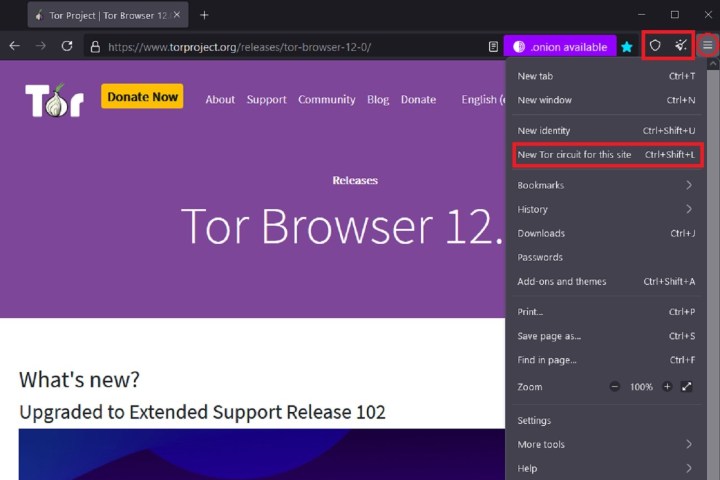
Step 7: If you select the Three horizontal lines menu icon, a drop-down menu will appear. In that menu, alongside New identity, you can also select New Tor circuit for this site. A circuit is essentially the pathway it takes to connect a user to a website via Tor. If you’re having trouble connecting to a website, you can restart the tab and try to load the website with a new circuit in order to establish a successful connection. You can do this by selecting the New Tor circuit for this site option. Your private info does not get deleted with this feature.
Exploring the deep web

Tor is valuable as a tool to protect the user’s privacy, but that is not its only useful function. The other, more infamous use for Tor is as a gateway into the deep web, the massive portion of the web that is not indexed by search engines. Another popular term, dark web, generally refers to all the illegal or troubling activity that can happen on the deep web, but the two aren’t necessarily interchangeable, and users can trawl the deep web without nefarious intent.
Tor allows webpages, like clients, to protect their anonymity by configuring a server to connect with clients at a Tor relay in between. The server does not need to provide the IP address, and the user does not need it, instead using an onion address, a 56-character code that clients enter in place of a traditional URL.
The hidden pages on the Tor network comprise one of the most famous darknets, which are networks only accessible through particular software or authorization. A phrase like “darknet” conjures up images of shady dealings and not without cause. Some of the most notable hidden sites traffic in illegal goods and services, like the Silk Road, which was a popular black market darknet shut down by the FBI in 2013.
What are Tor’s limitations, hazards, and general safety?

While Tor is useful for browsing the web anonymously, it is not without problems. Naturally, this has drawn the attention of government organizations like the NSA and FBI, who consider Tor a target of particular interest.
While the Tor network is secure from traffic analysis, Tor is a modified version of Firefox and is vulnerable to attacks and exploits like any other browser. By infecting someone’s computer with malware, governments and cybercriminals can track browser activities, log keystrokes, copy webcam and surveillance footage, and even remotely access and control internet-connected devices.
There is no way to be completely secure on the internet, and Tor does not change this. By taking reasonable precautions, it is possible to minimize the risks of browsing with Tor, like using the TorCheck website to check that your connection to Tor is secure. You can also incorporate a virtual private network or VPN to provide additional security for your digital activities.
An important caveat to remember is that since Tor is free and open-source software, it isn’t able to protect any personal information that you choose to enter into a form. Just like always, you need to use common sense when browsing the internet and sharing information.
Also keep in mind that users may need to disable certain scripts and plugins, so you may not be able to run everything you want on Tor. And if you’re thinking about using Tor to download torrents, think again. Torrenting is a file-sharing process that relies on the P2P protocol. Users download bits of a file from others and share the bits they have acquired with users who are downloading the same file. This protocol makes your IP address visible to the users you share files with, making onion routing pointless.
If you decide to visit Tor’s hidden or anonymous servers, be mindful of the sites you visit. While many pages tend to be socially acceptable or at the very least legal, such as sites for whistleblowers or Bitcoin exchanges, some of the other sites are havens for disturbing and even criminal behavior.


